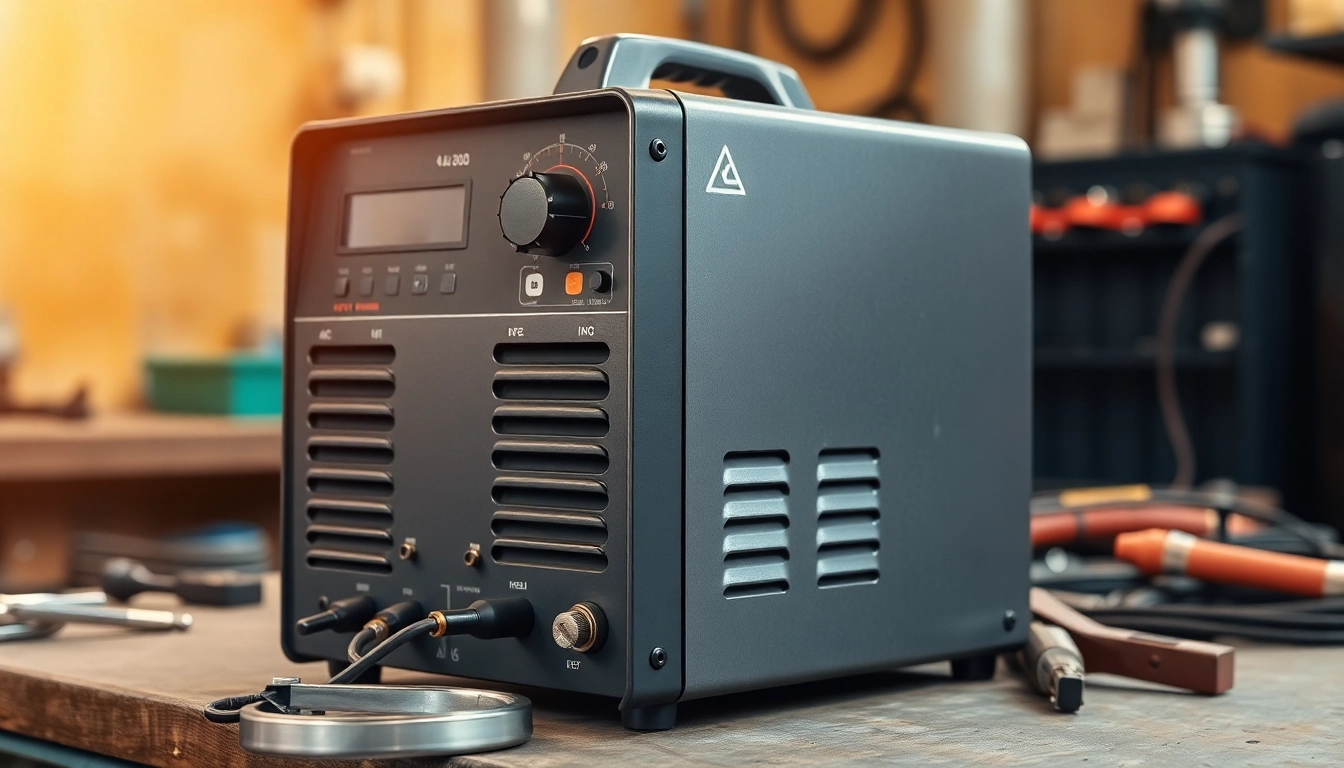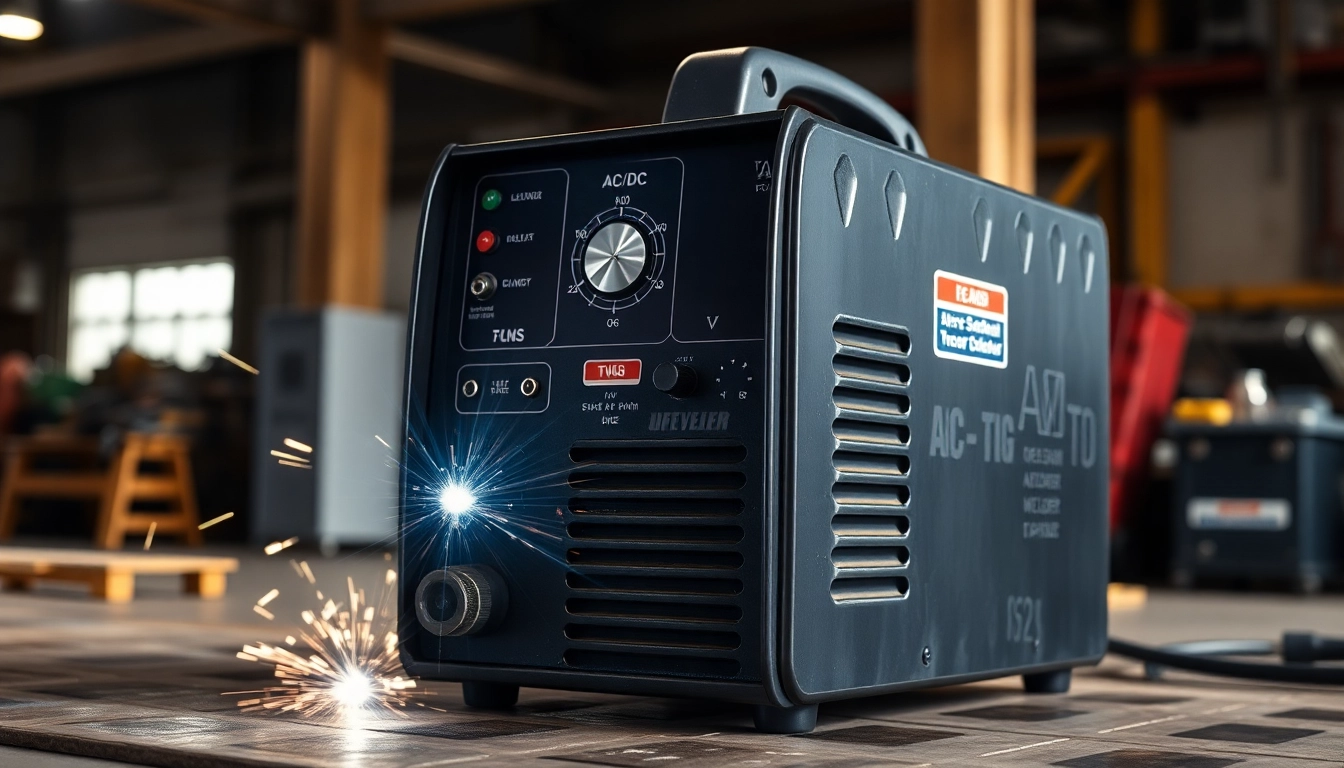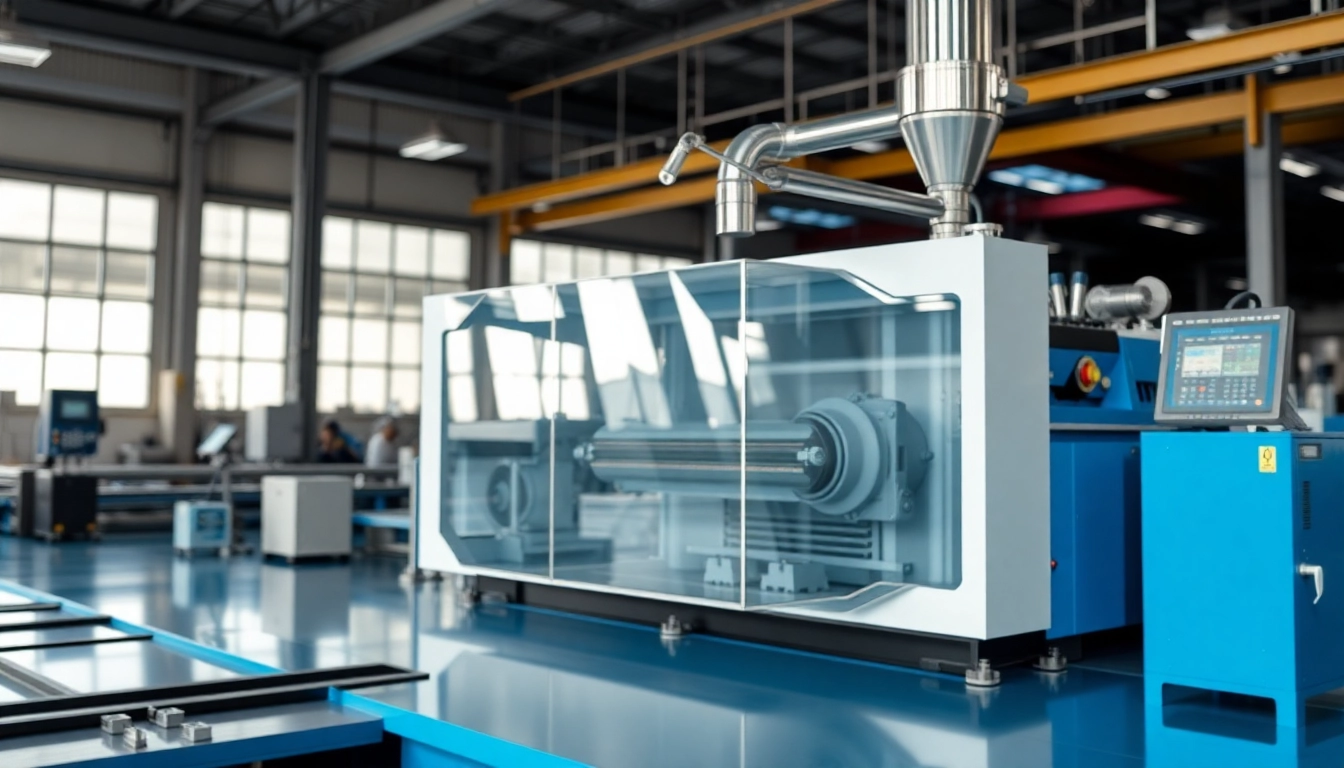Understanding AC DC TIG Welders
What is an AC DC TIG Welder?
An ac dc tig welder is a sophisticated welding machine that combines the capabilities of both alternating current (AC) and direct current (DC) to effectively weld various types of metals. This versatility allows welders to seamlessly work with materials like aluminum, stainless steel, and mild steel, making AC DC TIG welders a preferred choice among both hobbyists and professionals in the welding industry.
The unique aspect of these welders is their ability to switch between AC and DC modes depending on the welding challenge at hand. AC is beneficial when welding non-ferrous metals such as aluminum due to its superior arc stability and cleaning action, while DC is typically used for welding ferrous materials, offering smoother and more stable arc performance.
Key Features of AC DC TIG Welders
- Versatility: AC DC TIG welders can handle a wider range of applications, ensuring they are suitable for various metal types and thicknesses.
- Control Settings: Many models feature adjustable settings for amperage and frequency, allowing finer control over the welding process.
- Pulse Settings: Some AC DC TIG welders come with pulse options which help in controlling heat input and providing a clean weld.
- Portability: Many modern AC DC TIG welders are lightweight and compact, making them easy to transport and ideal for job site use.
- Advanced Technology: Features such as high-frequency starts, digital displays, and advanced cooling systems are often included for improved performance.
Benefits of Using AC DC TIG Welders
The benefits of using AC DC TIG welders are manifold. One of the most compelling advantages is their ability to weld both non-ferrous and ferrous metals effectively. This adaptability reduces the need for multiple welding machines, saving money and space.
Additionally, AC DC TIG welders offer better heat management, which is crucial when working with thin materials. The ability to adjust the current output allows welders to prevent burn-through, particularly when welding delicate materials. Moreover, TIG welding creates cleaner and more aesthetically pleasing welds, which is especially important in industries such as automotive and high-end fabrication.
Choosing the Right AC DC TIG Welder for Your Needs
Factors to Consider When Buying
When selecting the right AC DC TIG welder, several factors should be considered:
- Material Type: Different welders may perform better with specific materials. It’s essential to know whether you will be mainly welding aluminum, stainless steel, or general steel.
- Power Requirements: Ensure that the welder can handle your required amperage; higher amperage is necessary for thicker materials.
- Ease of Use: Look for features such as user-friendly controls, foot pedals, and advanced displays that enhance usability.
- Duty Cycle: The duty cycle indicates how long the welder can run before it needs to cool down. A higher duty cycle is advantageous for continuous work.
- Portability: If you plan to move your welder frequently, consider its weight and design for transport.
Top Brands to Explore
Several reputable brands are well-known in the AC DC TIG welder market, such as:
- Lincoln Electric: Known for high-quality welders with strong welding performance and durability.
- Miller Electric: Offers a variety of models suitable for professionals and hobbyists alike.
- Everlast: Provides cost-effective options without sacrificing important features.
- PrimeWeld: Gaining popularity for their reliable and user-friendly designs.
- Hobart: Known for its robust build and excellent customer service.
Comparing Models and Their Specifications
When comparing different models, focus on specifications such as:
- Amperage Range: Look for welders offering a broad range of amperage settings to cover various welding needs.
- Voltage Options: Some models offer dual voltage, which can be advantageous for different power sources.
- Control Features: Review what types of control features are available, such as digital versus analog.
- Warranty: Always check the warranty and customer support provided by the manufacturer.
Applications of AC DC TIG Welding
Industries That Rely on AC DC TIG Welders
AC DC TIG welders are widely utilized across various industries, including:
- Aerospace: Known for their precision and clean welds, these machines are critical in manufacturing aircraft components.
- Automotive: Auto manufacturers use AC DC TIG welding for creating strong yet visually appealing joints.
- Construction: Suitable for structural welding, particularly in stainless steel frameworks.
- Art Installations: Artists often prefer TIG welding for its aesthetic advantage in metal sculptures.
- Shipbuilding: The marine industry favors TIG welding for its ability to provide high-quality joints resistant to rust and corrosion.
Common Materials Welded with AC DC TIG
Common materials welded using AC DC TIG welders include:
- Aluminum: AC mode is typically employed to achieve a clean, strong weld.
- Stainless Steel: DC mode optimizes performance, ensuring strong joints that resist corrosion.
- Mild Steel: Offers excellent results with DC, making it popular in various applications.
- Copper: While more challenging, AC DC TIG welders can also handle copper for specialized applications.
Advantages Over Other Welding Methods
AC DC TIG welding holds several advantages over other welding methods:
- Higher Quality Welds: The process results in cleaner and stronger welds compared to MIG welding.
- Welding Thin Materials: The precise control allows for effective welding of thin materials without burn-through.
- Less Slag and Contamination: Unlike stick welding, TIG produces little to no slag, resulting in better-looking welds.
- Versatility: The ability to switch between AC and DC allows for a broader range of applications.
AC DC TIG Welder Maintenance Tips
Routine Maintenance Checklist
To ensure optimal performance from your AC DC TIG welder, regular maintenance is essential. Here’s a checklist to follow:
- Clean the Torch: After each use, clean the torch and inspect for any signs of wear or damage.
- Check Electrode Types: Use the correct tungsten electrode for your welding materials and replace as needed.
- Inspect Cables and Connections: Regularly check cables for wear and ensure connections are secure.
- Coolant Levels: For water-cooled setups, maintain proper coolant levels to prevent overheating.
- General Cleaning: Dust and debris can interfere with performance; regularly clean the welder’s exterior.
Identifying Common Issues
Be vigilant about potential issues that may arise with your AC DC TIG welder:
- Inconsistent Arc: May be caused by a dirty or damaged tungsten electrode.
- Overheating: Often a ventilation issue; ensure fans and cooling systems are functional.
- Failure to Start: Check power connections and circuit breakers if the welder fails to power on.
- Excessive Slag or Contamination: May indicate wrong gas flow or tungsten contamination.
Extending the Lifespan of Your Welder
To extend the lifespan of your AC DC TIG welder:
- Regular Maintenance: Follow the maintenance checklist and attend to any issues promptly.
- Proper Storage: Store your welder in a dry, cool location away from moisture and extreme temperatures.
- Use Quality Consumables: Using high-quality electrodes and filler materials can lead to better results and reduce wear on the machine.
Advanced Techniques in AC DC TIG Welding
Mastering Technique for Different Materials
Mastering AC DC TIG welding involves understanding how to approach different materials:
- Aluminum: Focus on a higher travel speed and wider arc to account for its rapid heat dispersion.
- Stainless Steel: Use a tighter arc and lower amperage to prevent overheating and distortion.
- Mild Steel: A balanced approach between travel speed and amperage will yield the best results.
Improving Your Welding Skills
Improvement comes with practice, and some strategies include:
- Consistent Practice: Regular practice on various materials will build muscle memory and improve technique.
- Join a Welding Community: Networking with other welders allows for knowledge exchange and skill improvement.
- Take Courses: Investing in formal training can provide insights and advanced techniques not found online.
Innovative Accessories for AC DC TIG Welders
Enhancing your welding capabilities can be achieved by incorporating innovative accessories:
- Foot Pedals: Allow for better control of amperage during welding.
- Weld Cleaning Kits: Essential for maintaining clean surfaces for a quality weld.
- Gas Lens Kits: Improve gas coverage and shielding for more precise welds.
- Welding Blankets: Protect surrounding areas from heat damage during the welding process.



